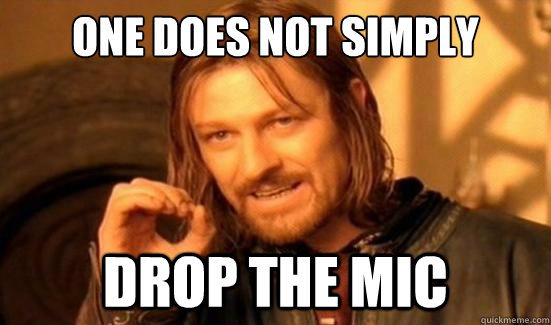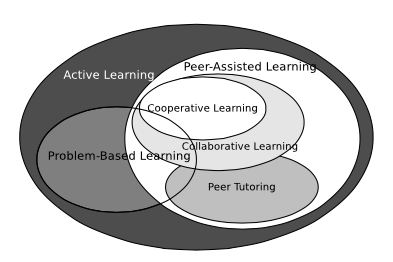Thanks for your#Rhizo15 hack in week 4, Viplav. Your questions really got me thinking:
- How do we really learn online?
- How much of control and direction do we need?
- How much of control do we want when we teach?
- How do we expect others to learn in such environments?
- What do we expect of them as co-learners?
For #Rhizo15, a strong and involved learning community, the answers are easier to navigate when we remove the instructor or when “DAVE’S NOT HERE.” With a number of educators who are passionate about learning and entrenched in thinking in #rhizo15, you are bound to keep the conversation going and the learners engaged. For most of us, we have experienced traditional pedagogical models and like the ideas of this sort of free-form learning and ability to dip into the curriculum as we like. Also, it won’t take much for someone to create a video, post a cartoon, record a sound cloud, or throw up a blog post on the topic of getting rid of the instructor. As co-learners, we thrive among the course banter and expect one another to contribute. So getting rid of Dave (metaphorically, of course) in #rhizo15, would not impact this course as much as we think (no offense, Dave).
Now, what would happen if we removed an instructor from a course? This could be online or face-to-face class. How would the learners react? When control is given to the course participants, will it be “Learners Gone Wild” or will our students take up the charge to contribute? My thought: it really depends on the course design.
These questions made me think back to my undergraduate days at the University of Guelph (Go Gryphons!), where most of my 4th-year history seminar courses were just that. As per the typical course syllabi, we were assigned weekly readings; however instead of coming to a “sage on a stage” lecture we were required to do the teaching. Each week 1-2 students volunteered to offer a micro lesson, develop questions, and facilitate the discussion on a topic. The professor often sat back in the class, and let us drive the critical analysis, synthesize the material, and debate about issues. It was GREAT! I thought – THIS is what learning is all about at university. I want more!
Student-centered learning theories & methods for flipped learning (Bishop & Verleger, 2013).
Student-centered learning is the key to deep learning, and although not described as “flipped learning” (Bishop & Verleger, 2013) back then, this is what most of my history faculty did at U of G. If you set up your curriculum to purposefully ALLOW for peer-to-peer learning, then removing the facilitator/instructor from the course may be just what you need. By creating intentional spaces (online or in-class) and opportunities for your students to co-learn, you might just be surprised on how they can bring more life to the course subject. During the course, instructors become facilitators of learning to support students with active learning strategies, such as individual problem-solving and team-based projects.Empowering your learners to take the reigns requires them to be embedded in the discipline of study. When you teach someone else about a concept, it requires a deep understanding of the material before you have to explain or critique it.
This does take some intention and planning in how you set up your course structure. It will be important for you to think about where, how, and when you want to infuse peer instruction and the support required for your learners. Think about how you want learners to contribute, lead, evaluate, and understand. When done well, this type of learning has huge benefits for both the instructor and leaders. There are so many possibilities to create dynamic interactions, meaningful conversations and critical thinking about your subject without your lead. Embrace the idea of “letting go of teaching” to see what might happen in part or all of your class. You might be pleasantly surprised at what YOU will learn from your students. Be sure to answer the following questions before you “drop the mic” as an instructor (adopted from Hoffman, 2014):
- What positive opportunities can student-lead instruction offer your students?
- How can instructors benefit from creating a cooperative learning experience?
- What are the possible challenges students and instructors might with peer-assisted learning, and how might they be avoided?
- What are evidence-based practices for learning environment without an instructor?
Interested in joining the #Rhizo15 world late or want to be part of the conversation and not just a lurker? Dave’s got a guide for that:
- This is a list of all rhizo15 blog posts
- Pick a title that resonates – click on it.
- Leave a comment
- Approach mirror, give the person in the mirror a high five
- Return contentedly to previous activity
For those #Rhizo15 slackers like Kevin & me (well, myself more so), we’re working on said things. The Slackers #Rhizo15 Guide will be available… when we get around to it. 🙂
 Cartoon via @dogtrax (Thanks, Kevin!)
Cartoon via @dogtrax (Thanks, Kevin!)
References:
Bishop, J. L., & Verleger, M. A. (2013). The flipped classroom: A survey of the research. In Proceedings from the 120th ASEE Annual Conference & Exposition, Atlanta, GA.
Hoffman, J. G. (2014). The functionality and feasibility of flipping. Proceedings from the 25th International Conference on College Teaching and Learning, (pp. 112-126). Jacksonville, FL




You must be logged in to post a comment.